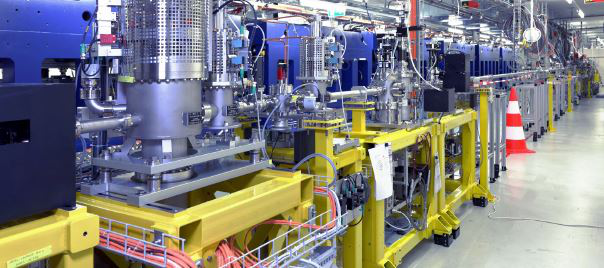Speaker
Description
The reflection zone plate (RZP), as a wavelength-dispersive optical element, has been successfully used in several designs of femtosecond (fs) spectrometers and monochromators for soft X-rays [1]. While demonstrating its evident advantages in comparison with conventional VLS gratings, like a high resolving power at the design energy and an excellent signal-to-noise ratio, RZPs on planar substrates suffer from a narrow energy range in parallel spectral registration, limiting the applications of this type of optic. Recent developments in theory, technology, and metrology of RZPs make it possible to fabricate RZPs on spherical substrates with a small radius of curvature down to 2 m.
In this work, we report on first results obtained with newly designed high-resolution soft X-ray fluorescence spectrometer, based on RZPs, which were fabricated on a spherical substrate. High resolution flat field spectra within about ± 50 % around the design energies were measured in the interval from 150 eV to 750 eV, using only two RZPs: The 1st RZP with its design energy of 277 eV covers the band (150 – 550) eV and the 2nd RZP with a design energy of 460 eV covers the band (350 – 750) eV, where the upper bound to this energy range is defined by the Ni coating of the RZPs. The absolute diffraction efficiency reaches 25 % and 20 % at the design energies 277 eV and 460 eV, respectively. The energy resolving power E/E exceeds 2000 in the entire energy range. To compensate the slope error of the substrate, an algorithm for diffractive wavefront correction [2] was used in the calculation of the groove structure.
The development of theory and technology for RZPs on figured substrates opens new possibilities for a considerable improvement of the instrumental performance in soft X-ray spectroscopy, pushing forward the frontiers in time, resolving power and efficiency of dispersive optical elements. Successful results of tests enabled NOB GmbH to start customer-oriented production of RZPs on spherical substrates for spectroscopic applications.
This work was supported by the project REFLEX, Berlin Program ProFiT co-financed by the European Regional Development Fund (ERDF) and project NeuGaR, partly financed by the Federal Ministry for Economic Affairs and Energy.
[1] A. Erko, C. Braig, and H. Löchel, “Spectrometers and monochromators for femtosecond soft x-ray sources,” Proc. SPIE 11108, 111080J (2019).
[2] J. Probst, C. Braig, E. Langlotz, I. Rahneberg, M. Kühnel, T. Zeschke, F. Siewert, T. Krist, and A. Erko, “Conception of diffractive wavefront correction for XUV and soft x-ray spectroscopy,” Appl. Opt. 59, 2580 – 2590 (2020).
